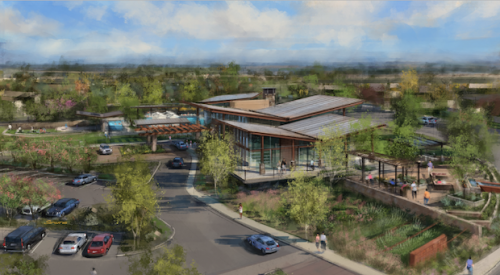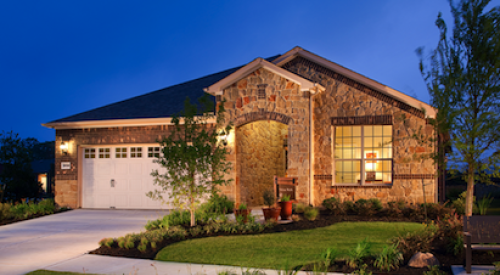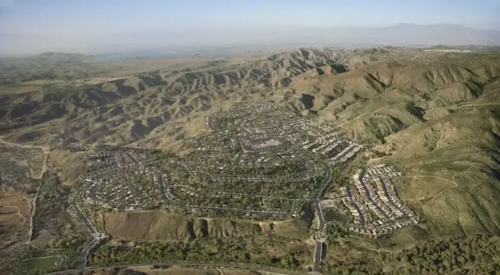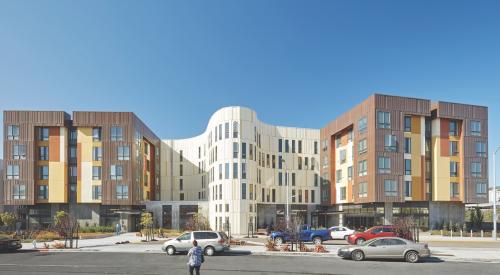These interviews with baby boomers all over the country suggest that tomorrows’ boomer-friendly communities will be:
Not Age Restricted; Subtly Age Targeted
Although the product, amenities, and overall design will be specifically planned to meet the needs and wants of a baby boomer target, there will be no age restriction covenants. Rather, the appropriate prospects will be drawn to the community with sensitive marketing, public relations and through word of mouth.
There are already a number of existing communities aimed at empty nesters and young retirees that are age-targeted, rather than age-restricted. They feel they have succeeded in drawing the prospects they want while avoiding the negatives of overt age restriction. The down side could be that zoning boards might not be as willing to grant approvals without the assurance there will be no school age children—a particular plus for age restriction. The possibility of a new kind of zoning for age-targeted communities is now being debated in various areas of the country.
Since age restriction appears to be a big hang-up with the boomers, a better way would be subtle age targeting, along with locating the community in an area where there is an opportunity to interact with other age groups..
In-town, TND, Master Planned
Boomer-friendly communities will not be isolated or set off by themselves. They are likely to be most successful as a pod within a larger master planned community or as a TND community, which offers wide diversity in both product design and resident base.
A pedestrian-oriented land plan that brings all the conveniences and amenities into a readily accessed town center appeals as well. Boomers talked about the convenience of being able to walk to restaurants, theaters, exercise centers, sports events, etc.
An extraordinarily large number of the boomers are looking for home businesses and home offices so they can cut down on the trials of commuting to work - an especially big deal in larger metropolitan areas like New Jersey and Chicago. However, even in Austin, Raleigh, and Sacramento, respondents talked about getting away from the ever-growing problems of commuting.
Overall, these boomers say they are looking to "simplify their lives" as they move into the next phase of life. They put a great deal of emphasis on cutting down on pressures and responsibilities and concentrating on what they really want to do with their time. They opt for relatively small outdoor areas - "less to be responsible for," maintenance-free materials both inside and outside the home, and maintenance services for their individual lawn and property.
They want the convenience a maintained community offers of being able to lock their doors and travel whenever they want.
Not Too Large/Too Many Homes
Boomers tend to be put off by communities with thousands of homes. They favor somewhat smaller communities which have more of the neighborhood feeling they believe has been lost over the years. Remember it was baby boomers who fueled the "back to tradition" push in home design and neighborhood planning just a few years ago.
The boomers feel there will be more opportunity for establishing relationships with their neighbors in a smaller community, and they believe they will be more able to individualize and personalize their home in a smaller environment. They are not a generation that is happy just blending into the crowd.
To create the sense of neighborhood boomers are looking for, larger developers are planning their communities with separate sections, each with its own park or central green.
Natural Setting/Environmentally Friendly
The love affair this generation has had with nature and a natural setting is well known. It is no surprise, therefore, that the boomers’ next stage of life home will be in a setting that takes advantage of the natural beauty of the area. Furthermore, there is no population group more obsessed with protecting the environment and more appalled at what they see as the ruthless plundering of the trees and natural growth that often occurs when new communities come into an area.
They will be looking for a community that not only utilizes the natural beauty of the area, but also enhances it. That is why there has been such favorable response to the sensitive and creative ways Del Webb and other builders are dealing with the natural beauties of the areas in which they are building with baby boomer prospects on their minds.
At Del Webb, Lincoln Hills, walking trails range over 600 acres of open space and through historic, relic-rich areas where the Maidu Indians ground rocks to prepare their maize and where they drew salt from the ancient saline marshes. A challenging walking trail system is an absolute must for this generation, even as it has been in recent years for the present residents at the active adult communities.
The biggest turnoff of all for boomers is a barren, tree-less, naked setting, with uninspired out-of-a-box landscaping. Unfortunately, when asked if their next stage home would be new or resale, a surprising number of these boomers indicated they would opt for a resale home specifically because it would have established landscaping. Their vision of new construction, is "no landscaping, no trees, nothing." "I like a neighborhood where the trees are higher than the houses."
New construction also took a hit because at least some boomer prospects are fearful about the quality of the product and the workmanship. "The quality of new homes is not good. There are not enough craftsmen today." Others were thinking resale because "I don’t want the teething pains of a new home."
Still others bemoaned that new construction is usually way out in the boondocks, that it is stamped out lots one after another, and that it lacks character. "I want it to have the look and character of an old home. I don’t want to walk into stark white. I want character with old home details like trim, crown moldings, wood floors."
On the positive side for new construction, and very much in keeping with what the boomers are all about: "I want new because I can control the perspective."
Competitive Amenities
The community will have a club house and an extensive recreation area (in cold weather areas, both indoor and outdoor recreational areas). Because this generation has always been highly competitive, it will be important to keep abreast of which competitive sports are popular with baby boomers when you are building. A court or courts for basketball, volleyball (always in with boomers), softball, and maybe racquetball are right on for this crowd. Sports facilities that can accommodate tournaments and other competitive events could be an important draw.
Del Webb includes in its newer communities an oversized indoor lap pool, some with as many as six separate lanes to allow for competitive events. In Georgetown the lap pool area is used year round for Olympic swimming training. The Huntley community also has an indoor running track and an awesome exercise area that makes state of the art seem obsolete!
Talk about projecting young, some Del Webb communities have the newest of all challenges, a rock climbing wall. Several have rollerblading clubs. At Abacoa, an age-targeted community within a master planned development in Jupiter, Florida, a primary attraction is a real baseball stadium. The stadium is available to residents for baseball practice all year long, but it also serves as the spring training camp for the Montreal Expos and the St.Louis Cardinals.
Destination Undecided
Respondents were mixed on whether boomer-friendly communities will best be located in areas close to home or whether they will be destination communities. They do suggest, however, that this may not be as large an issue with the boomers as it was with earlier buyers.
With those prospects, it became essential to bring right to their own backyard the same kind of maintenance free, full-blown recreational community that had previously been available only in the Sunbelt and resort areas. These prospects were intrigued with the concept of this new kind of living and were desperate for a housing option that would get them out of their too large homes. They were, however, unwilling to pick up roots and leave the areas they had lived in most of their lives, and where their children and grandchildren are often still living. Theirs was a generation that had often lived in one home for 20, 30, even 40 years, and in one area for most of their lifetime.
Not so with the boomer generation. They have moved around a great deal during their lives. They have lived in many different places. In several of the cities we visited (Raleigh, Austin, Sacramento), there were only two or three people in each group who were native to the area. For the most part, baby boomers are willing to move again for their next stage of life.
This was true in all but one location - Chicago. Chicagoans were often born and bred there. Almost to a person, they were adamant they would never give up at least a base in Chicago. Many were considering a second home or a seasonal rental in a warmer climate for a few months of the year, but their primary home would always, they said, be in Chicago.
Second homes are also on the minds of boomers in other parts of the country. However, the prevalent thinking is a primary home in or around the city, with a second home for relaxation at the beach, in the mountains or at nearby lake areas. Even in Chicago, several people were entertaining the possibility of building or buying a second home at the neighboring resort area in Lake Geneva, Wisconsin.
Link With Learning
In their search to do the most with their next stage home, boomers are looking for new opportunities to learn additional skills, expand their present skills and expose themselves to new subjects and different kinds of learning experiences. In the interviews, they often talked about going back to school and taking courses in order to plan for a different kind of career or just to broaden their horizons.
There are now 263 colleges and universities across the country (with another 50 coming aboard soon) that offer special programs for retirees or other older students. Often these programs have come about specifically because of requests from older residents living nearby. Some, like the very new Institute for Lifetime Learning at Montgomery College, located within The Woodlands master planned community in Texas, are jointly sponsored by the college along with the active adult community developer. In this case, The Woodlands Development Corporation was part of the original planning for the program.
A boomer-friendly community of the future will look for this kind of link with a college or university and find it a particularly valuable amenity for the education-oriented boomer population they will be targeting.
Also See:
Coming Boomer-Friendly Home












